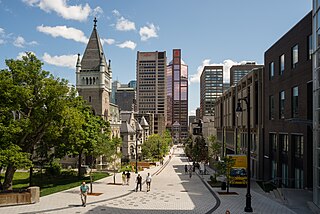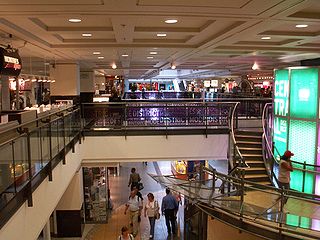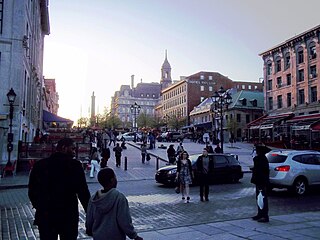| Montreal's fortifications | |
|---|---|
| in Champ de Mars, Montreal Quebec, Canada | |
| Type | Montreal's fortifications, formerly a parade grounds and city walls |

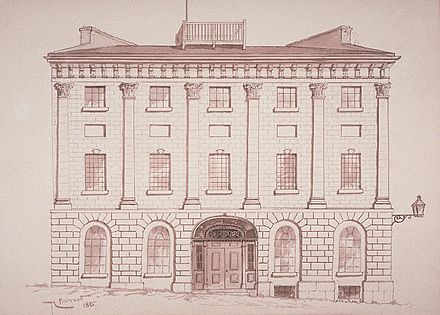
Champ de Mars is a public park in Old Montreal quarter of Montreal, Quebec, Canada.

An urban park or metropolitan park, also known as a municipal park or a public park, public open space, or municipal gardens (UK), is a park in cities and other incorporated places to offer recreation and green space to residents of, and visitors to, the municipality. The design, operation and maintenance is usually done by government agencies, typically on the local level, but may occasionally be contracted out to a park conservancy, friends of group, or private sector company.

Old Montreal is a historic neighbourhood within the municipality of Montreal in the province of Quebec, Canada. Founded by French settlers in 1642 as Fort Ville-Marie, Old Montreal is home to many structures dating back to the era of New France. The 17th century settlement lends its name to the borough in which the neighbourhood lies, Ville-Marie. Home to the Old Port of Montreal, the neighbourhood is bordered on the west by McGill Street, on the north by Ruelle des Fortifications, on the east by rue Saint-André, and on the south by the Saint Lawrence River. Following recent amendments, the neighbourhood has expanded to include the Rue des Soeurs Grises in the west, Saint Antoine Street in the north, and Saint Hubert Street in the east. In 1964, much of Old Montreal was declared a historic district by the Ministère des Affaires culturelles du Québec.
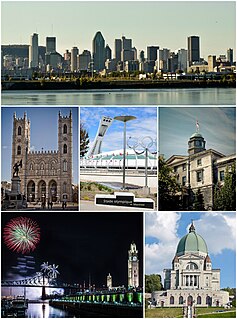
Montreal is the most populous municipality in the Canadian province of Quebec and the second-most populous municipality in Canada. Originally called Ville-Marie, or "City of Mary", it is named after Mount Royal, the triple-peaked hill in the heart of the city. The city is centred on the Island of Montreal, which took its name from the same source as the city, and a few much smaller peripheral islands, the largest of which is Île Bizard. It has a distinct four-season continental climate with warm to hot summers and cold, snowy winters.
Contents
Formerly a military parade ground, the park had previously been the site of Montreal's fortifications, which were demolished at the beginning of the 19th century soon after Montreal City Hall and the old courthouse were built. It had served as a municipal parking lot until being restored as a park in 1980s. At that time, the foundations of Montreal's city walls were discovered and restored.

The Citadel of Montreal was a former fortress used to defend the city.

The five-story Montreal City Hall is the seat of local government in Montreal, Quebec, Canada. It was designed by architects Henri-Maurice Perrault and Alexander Cowper Hutchison, and built between 1872 and 1878 in the Second Empire style. It is located in Old Montreal, between Place Jacques-Cartier and the Champ de Mars, at 275 Notre-Dame Street East. The closest Metro station is Champ-de-Mars, on the Orange Line.
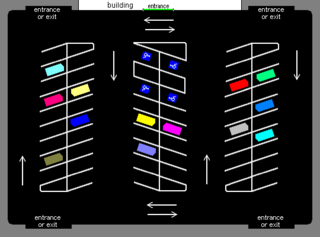
A parking lot or car park, also known as a car lot, is a cleared area that is intended for parking vehicles. Usually, the term refers to a dedicated area that has been provided with a durable or semi-durable surface. In most countries where cars are the dominant mode of transportation, parking lots are a feature of every city and suburban area. Shopping malls, sports stadiums, megachurches and similar venues often feature parking lots of immense area. See also multistorey car park.
The site's name commemorates its former military purpose; Mars was the Roman god of war and campus Martius was a Latin term for a military exercise ground. [1] The walls now standing on site were built to show the location of the original walls used to protect the city. [2]

In ancient Roman religion and myth, Mars was the god of war and also an agricultural guardian, a combination characteristic of early Rome. He was second in importance only to Jupiter and he was the most prominent of the military gods in the religion of the Roman army. Most of his festivals were held in March, the month named for him, and in October, which began the season for military campaigning and ended the season for farming.

Latin is a classical language belonging to the Italic branch of the Indo-European languages. The Latin alphabet is derived from the Etruscan and Greek alphabets and ultimately from the Phoenician alphabet.
The area is bordered by the Montreal City Hall, the old and new courthouses and the Champ-de-Mars Metro station.


